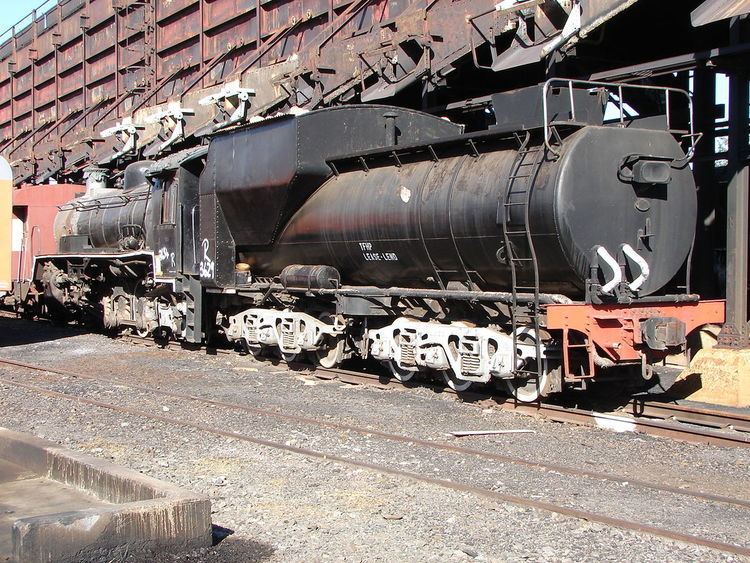Configuration 3-axle bogies | In service 1949 | |
 | ||
Designer South African Railways(Dr. M.M. Loubser) Gauge 3 ft 6 in (1,067 mm) Cape gauge | ||
The South African type MY tender was a steam locomotive tender.
Contents
Type MY tenders entered service in 1949 and 1950, as tenders to the Class 24 2-8-4 Berkshire type branchline steam locomotives which entered service on the South African Railways in that year.
Manufacturer
Type MY tenders were built in 1949 by North British Locomotive Company.
The Class 24 2-8-4 Berkshire type steam locomotive was designed by Dr. M.M. Loubser, Chief Mechanical Engineer of the South African Railways (SAR) from 1939 to 1949, to replace the old Classes 6, 7 and 8 locomotives in branchline service on light rail in South Africa and especially in South West Africa. The Type MY entered service as tenders to these locomotives.
Characteristics
The tender had a coal capacity of 9 long tons (9.1 tonnes), a water capacity of 4,520 imperial gallons (20,500 litres) and a maximum axle loading of 9 long tons 10 hundredweight (9,652 kilograms).
It was a tank wagon type tender, similar in appearance to the North American Vanderbilt type tender, with a cylindrical water tank which had an inside diameter of 6 feet 5 3⁄4 inches (1,975 millimetres). The tender was similar to the Type MX tender, but its wheelbase was 10 feet 1 3⁄4 inches (3,092 millimetres) shorter. Like the Type MX tender, it rode on three-axle Buckeye bogies, supplied by General Steel Castings of Eddystone, Pennsylvania, and became commonly known as a Torpedo tender. Like its engine, the tender was equipped with vacuum brakes.
Locomotive
Only the Class 24 locomotives were delivered new with Type MY tenders, which were numbered in the range from 3601 to 3700 for their engines. An oval number plate, bearing the engine number and often also the tender type, was attached to the rear end of the tenders.
Classification letters
Since many tender types are interchangeable between different locomotive classes and types, a tender classification system was adopted by the SAR. The first letter of the tender type indicates the classes of engines to which it could be coupled. The "M_" tenders could be used with the locomotive classes as shown, although in some cases, engine drawbars and intermediate emergency chains had to be replaced or adjusted to suit the target locomotive.
The second letter indicates the tender's water capacity. The "_Y" tenders had a capacity of between 4,500 and 4,520 imperial gallons (20,460 and 20,550 litres; 5,404 and 5,428 US gallons).
A number, when added after the letter code, indicates differences between similar tender types, such as function, wheelbase or coal bunker capacity.
